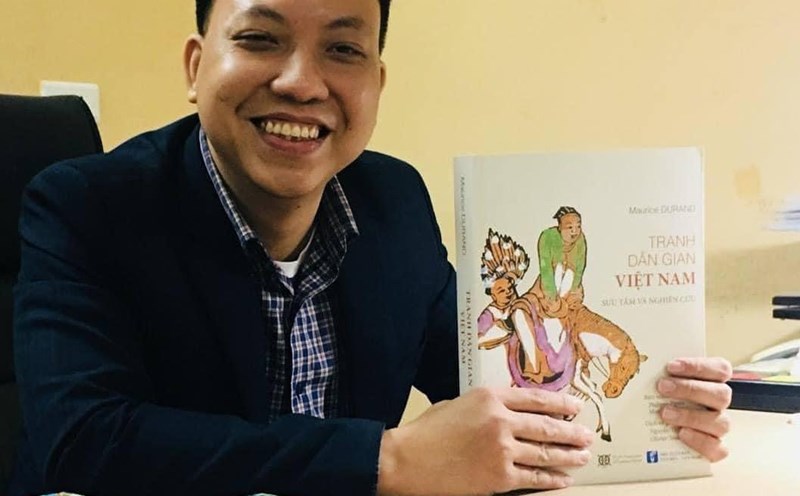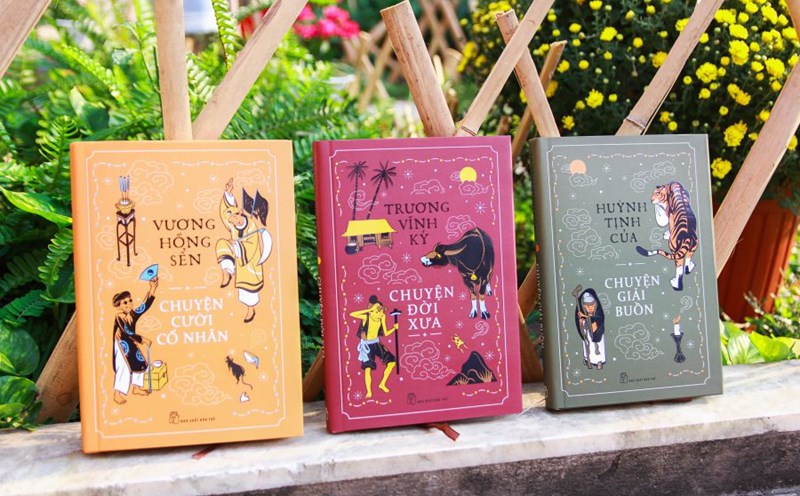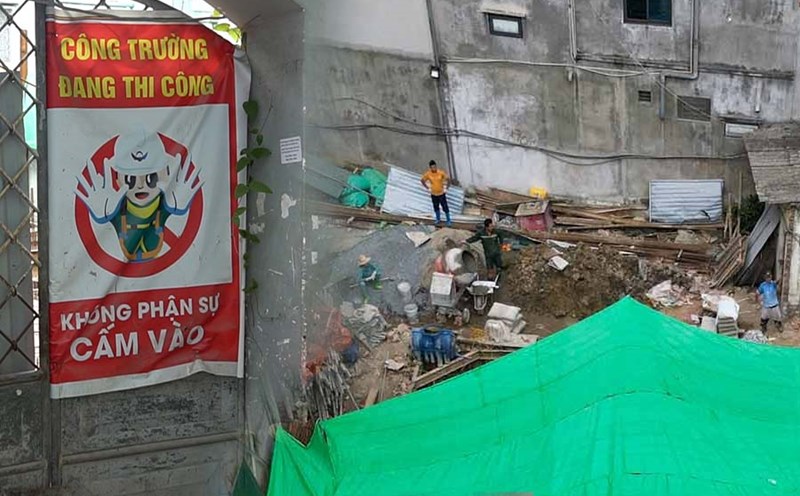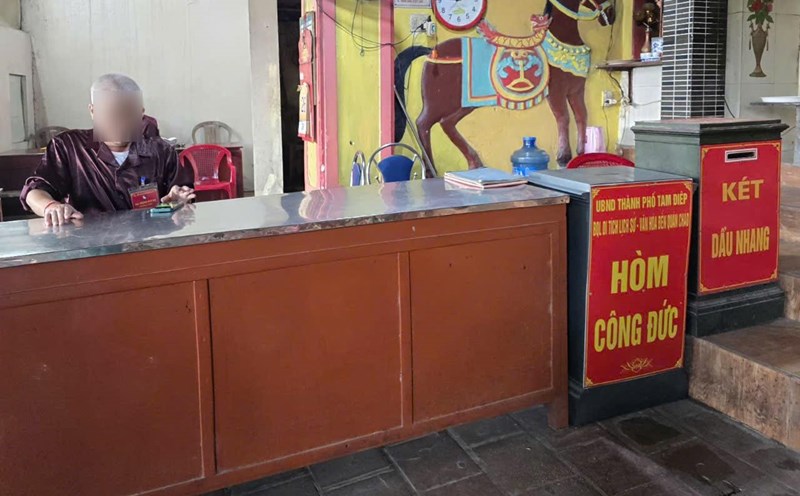The first articles of this book were written by the author more than twenty years ago. Until one day, not a very good day, the author gathered from more than a hundred articles published in newspapers, central and specialized magazines, selected, rewrote, trimmed, and took exactly 60 articles. into "home & people" with 330 large-sized pages, beautiful paper, published by the Writers' Association Publishing House and will be introduced to readers this August.
Surely everyone is very surprised to know that this is the first time - author and artist Le Thiet Cuong has had his own book launch, even though he has organized book launches for countless famous writers. , painter, musician, screenwriter... whom he loves, admires, even worships.
If readers know more about the fate of "house & people" being born, they will appreciate its author - artist Le Thiet Cuong - even more.
Going through many hardships at the same time. But like the name Le Thiet Cuong has brought into his life, the artist is not pessimistic, but is still brave, still calmly working, interacting with brothers and friends to select and correct his writings in over the past 20 years divided into 4 topics: Book 1 - is architecture and interior through a cultural perspective named "House and people"; Book 2 - is "Conversation with painting"; Book 3 - "In every grain of rice there is a grain of rice" includes articles about Vietnamese culture and art; The last book, photography, will be released in the near future.
Everyone appreciates Le Thiet Cuong's fierceness in each article. Every article, he writes like it's the first time, writing with all his heart, pouring his heart and soul into it, whether it's an essay, a short article, or a post on Facebook. That's why the 60 essays in "house & people", every article is new, and not duplicated by anyone, or with my own old articles, even if it's the same topic...
His writing is concise, sharp, minimalist, not at all fussy but full of material and many hidden meanings. As the editor of this book, I was drawn to the manuscript, reading it like a trance, reading it again and again, even though I had read many articles in the press. The most interesting thing is that there is no need to add, remove, or correct a single place because the author has checked very carefully, even finding a spelling error is difficult to find. What a rarity!
The author's good thing is that when writing, he transforms according to the content of the topic, so there is no boasting of scholarship or knowledge. Like when writing about painting, he transforms colors, compositions, and lines into simple, easy-to-understand writing, rather than dazzling people with phrases used only for the art world. Or the house or the street too!
Overall, the layout, although he said it is divided into two parts like the cover title, but if readers pay attention, it is very clear that each segment, street, village, house, kitchen..., in which, every segment attracts me. , but I really love the series about the kitchen with 4 consecutive articles, from "fire & water", "single kitchen", "cleaning the kitchen", "separate kitchen"...
The song “fire & water” is very profound. Water and fire are two main elements of life. Our ancestors in the past chose a place to live focusing on these two factors: Next to a water source for living and the cave entrance to avoid the Northeast wind to keep the fire from day to day, from generation to generation.
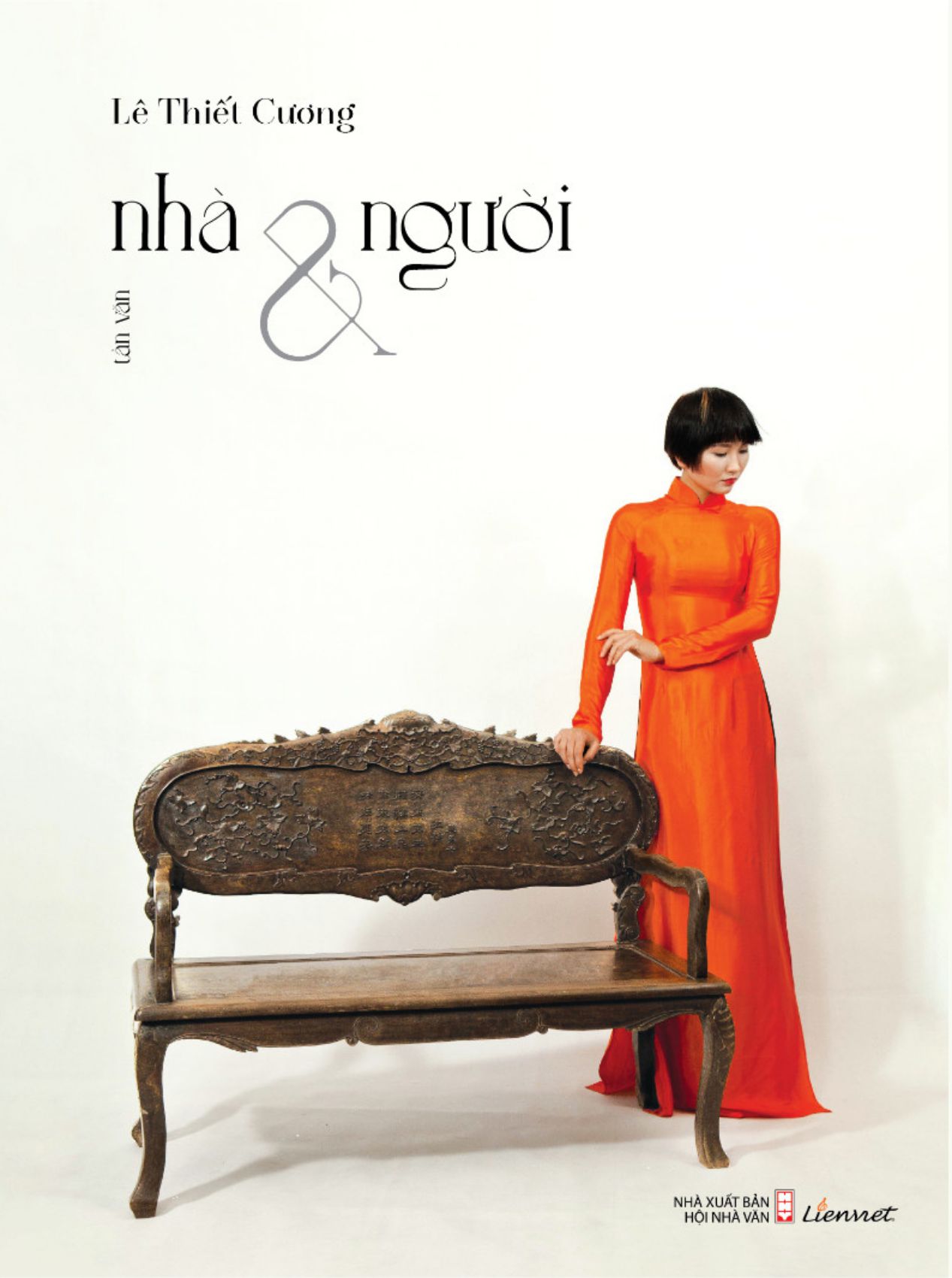
“Single Kitchen” shows a typical wartime scene of 30 artists living on one floor with 10 rooms in a 4-story dormitory of single writers and artists. When it's time to cook, bring 30 stoves to the hallway, 30 matches, 30 pots of boiling rice, 30 bags of beans, 30 loneliness, 30 loneliness repeated over and over again in the dim hallway.
From kitchen matters, Le Thiet Cuong naturally "steered" to the issue of happiness. Nowadays, many houses have big, spacious, and very modern kitchens, but are they happy or not? To prove it, he cited teacher Dang Dinh Hung with a bowl of melon soup that he slurped and found delicious and happy because he could "taste" the flavors of family.
Only then can we see that the kitchen is still family warmth, simple and obvious happiness that has remained the same for thousands of years! But now, how many people can feel it?
In "Cleaning the Kitchen" the author took me to Ha Cau Orphanage School - Ha Dong, where I encountered an extremely touching story because of the picture of an orphan drawn with a black pencil on white A4 paper with just a few strokes. , it's easy to imagine a kitchen and a small table and chairs. She confided: "I drew a meal, I sat in the middle, my parents sat at both ends of the table. At school, the teachers love me and treat me like a child, but I still dream of a warm home with simple family meals like many families have."
Later, I read some more articles written by Le Thiet Cuong about cuisine, especially the article "Fish Sauce Border" published in Tia Sang recently, and I understood why every time the artist invited me to eat, I brought a tray of lipstick. The bowls contain fish sauce, and if the banh cuon is, it must have the taste of real Ca Cuong. At first I thought my friend was being too picky, but no, he was reminding me of the taste of family and homeland that I was probably gradually losing.
"Private Kitchen" is the same, continuing the family story, with added emphasis: The story of husband and wife, the story of the house, the happiness and unhappiness surrounding it, is still the story of the kitchen.
60 essays "house & people", are 60 separate worlds, 60 complete works but arranged by the author in clusters of articles that are closely related to each other, supporting each other, the previous one is the premise for the next. later, the next one continues to solve the previous ones. Moreover, overall, the author, whether writing about houses, kitchens, streets, villages, temples, all converges to one point, people. Humans are the subject of the world around them, the subject of their inner self, including their spirituality...
In many articles, observant readers will feel the philosophy in the article, including Buddhism, even though it is dissolved in objects, events... Reading "36 Streets - One Hanoi", the author sees In the underworld, there is more nourishment than birth. Or read the essays "Da Lat's Destiny", where both Catholics and Buddhists chose to make Da Lat full of churches, pagodas and flowers.
With "house & people", Le Thiet Cuong became a collector, traveling all over the country, from urban areas, rural areas, villages, delving deep into the roots of culture, beauty, and love from ancient times... .
There are also times when the beauty, the old things are worn out, even lost... The beggar wants to find the past, to ask for the beautiful things of the past... In the same vein, In the song "Short Night", he also took us through a town in the United States (USA), Carmel left behind a beautiful, unfinished dream, each house has a different shape, no one is the same, just the same house. is also beautiful, the beauty of difference, like handcrafted fine arts works...
A song in the noisy and bustling land of flags with unique differences, next to skyscrapers like New York, world casinos like Las Vegas, the world of Hollywood cinema... still exists. The lovely town of Carmel, but a quiet note in the middle of the majestic harmony...
Thinking about "land & people"... And he dreamed again... The night is long and there are many dreams, but the night in Cali is too short... So the dream is forever unfinished...
July 28, 2024
The book "House & People" has 340 pages, size 18x24cm, licensed by the Writers' Association Publishing House and printed and published by Lien Viet company.
This is the first book in a series of three books by artist Le Thiet Cuong, which will be released one after another. Next are the books "Conversing with Painting" and "There are grains of rice in every grain of rice" (a collection of articles about Vietnamese culture).
The book introduction by artist Le Thiet Cuong will be held at 10:00 a.m. on August 8 at the Art Department, Writers' Association Publishing House (Hanoi).


